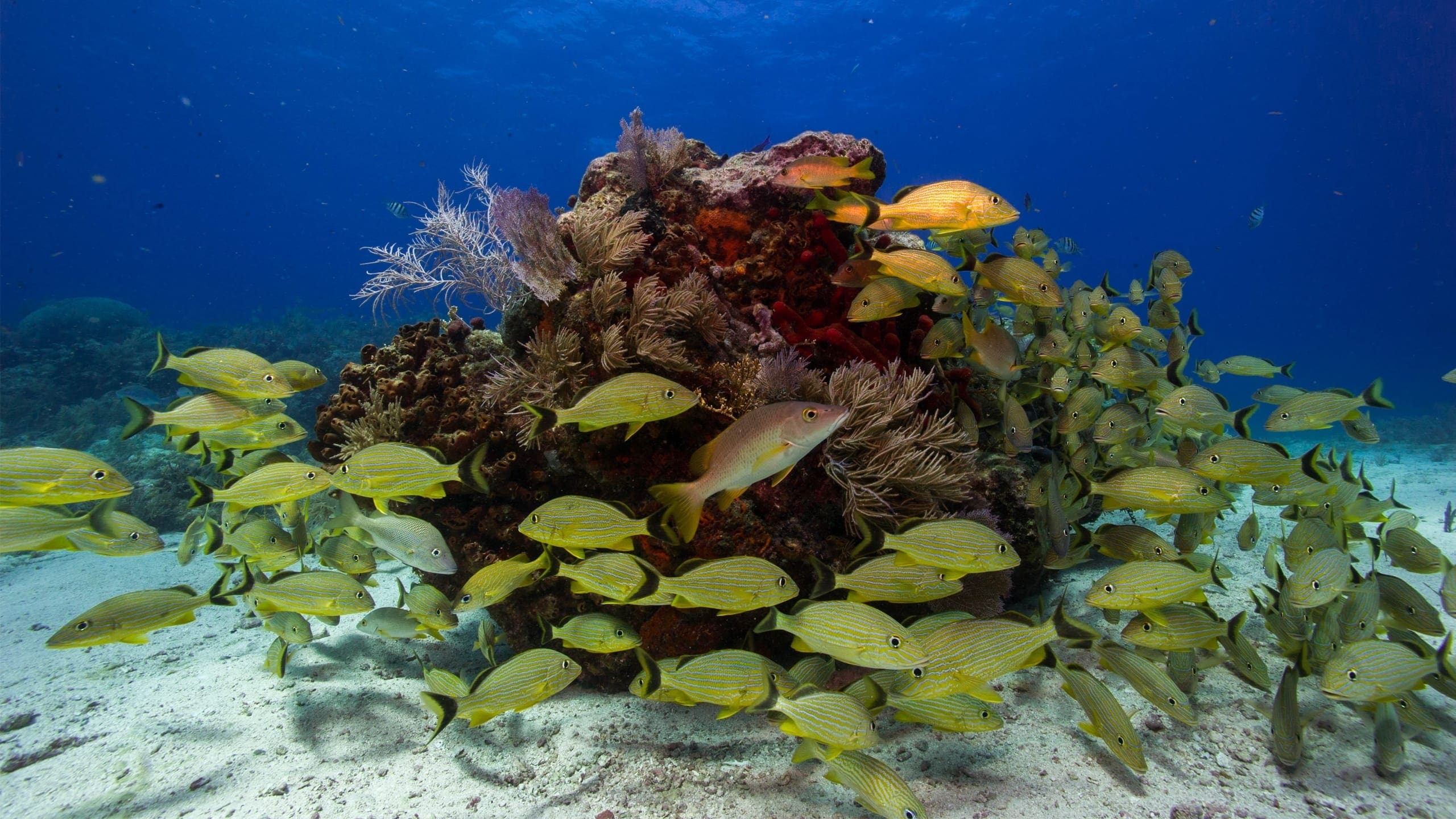About Biscayne National Park
Biscayne National Park was established in order to preserve and protect for the education, inspiration, recreation, and enjoyment of present and future generations a rare combination of terrestrial, marine, and amphibious life in a tropical setting of great natural beauty.
Biscayne National Park is located south of Miami, Florida. It is a marine park consisting of mostly submerged land and includes coral reefs, sandy shoals, 4,825 acres of mostly undeveloped mangrove shoreline, and more than 40 keys or islands primarily composed of limestone and coral. The primary means of access to park waters is by private, partner, or commercial permit holding operators. Visitors come to the area for recreational opportunities including boating, fishing, snorkeling, SCUBA diving, paddling, birding, and nature viewing.
Biscayne National Park is recognized for its natural resources, which represent a combination of terrestrial, estuarine, and marine resources in a subtropical setting of great natural beauty. The park can be divided generally into four prominent ecosystems: (1) terrestrial mangrove shorelines, (2) shallow estuarine system (Biscayne Bay) with diverse bottom communities, (3) keys (islands), and (4) coral reefs and hard bottom habitat. The coral reefs of Biscayne National Park are due east of the keys and are part of the Florida Reef Tract that stretches from the Dry Tortugas to Martin County. Much of the northern part of the Florida Reef Tract is in the park and makes up much of the northernmost extension of living coral reefs in the United States. Most of the shallow, protected waters of Biscayne Bay contain the estuarine environment of the park, which primarily supports seagrasses and hard bottom communities.
Biscayne National Park has a rich history of aboriginal occupation and use, Spanish and English exploration, pirates, smuggling, shipwrecks, marine salvaging, agriculture, and commercial development that reflects the continual link between humans and the sea that has characterized this area for the past 10,000 years.
Remnants of this cultural history are present throughout the park and are represented by both terrestrial and submerged cultural resources. Terrestrial cultural resources include Native American occupation sites as well as historic structures, ruins, homesteads, and farmsteads. Submerged and shoreline cultural resources include materials associated with prehistoric sites as well as historic shipwrecks, ship strandings, wharfs and piers, and the remains of other structures and materials along the water’s edge. Because of the park’s natural history of rising sea levels, former terrestrial sites (possibly early prehistoric ones) may now be under water.
Remnants of this cultural history are present throughout the park and are represented by both terrestrial and submerged cultural resources. Terrestrial cultural resources include Native American occupation sites as well as historic structures, ruins, homesteads, and farmsteads. Submerged and shoreline cultural resources include materials associated with prehistoric sites as well as historic shipwrecks, ship strandings, wharfs and piers, and the remains of other structures and materials along the water’s edge. Because of the park’s natural history of rising sea levels, former terrestrial sites (possibly early prehistoric ones) may now be under water.
Source: Foundation Document Overview – Biscayne National Park
Fast Facts:
| Date the Park was Established: | June 28, 1980 |
| Park Area (as of 2019): | 172,971.11 acres (700.0 km2) |
| Recreational Visitors (2018 Total): | 469253 visitors |

